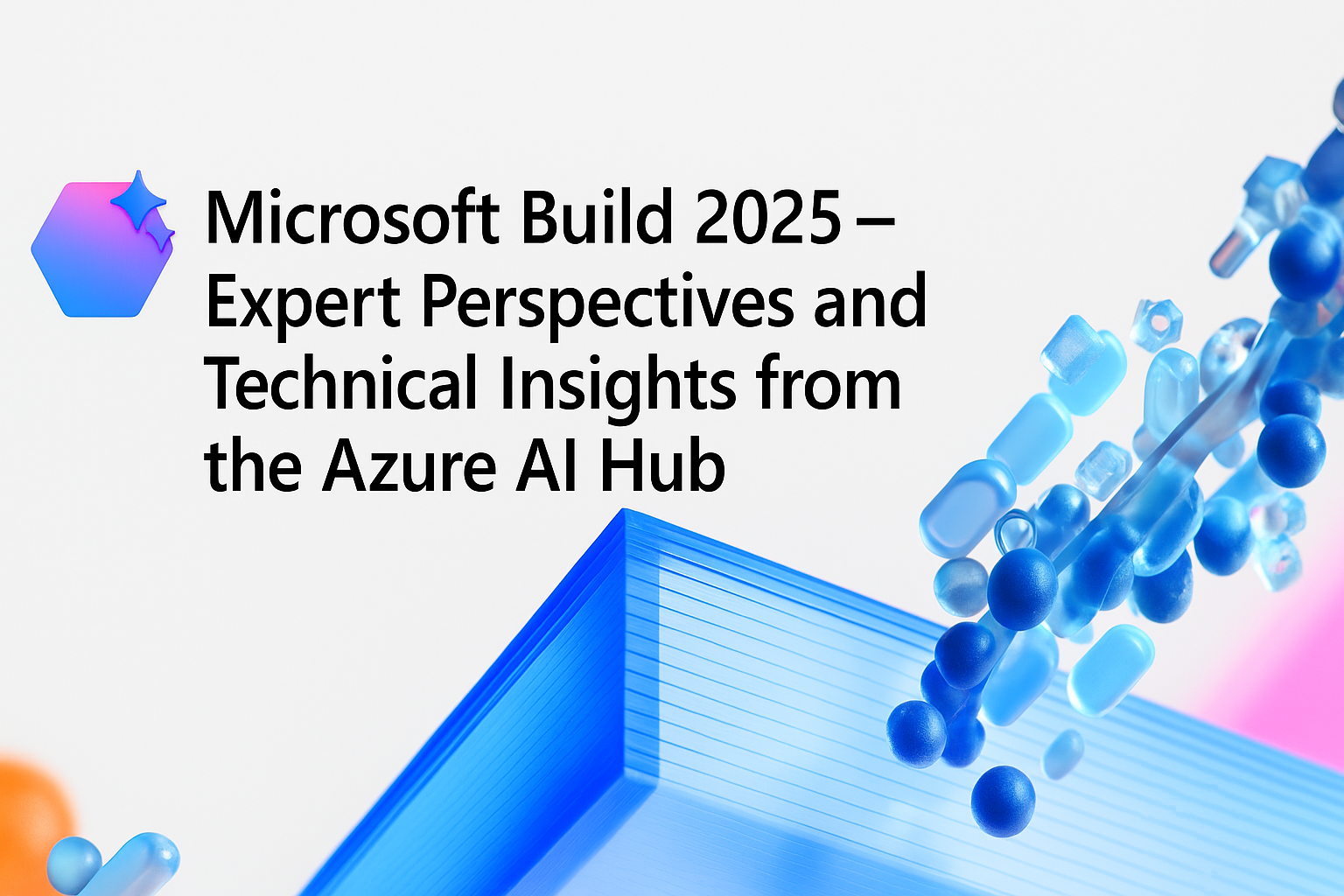Microsoft Build 2025 – Expert Perspectives and Technical Insights from the Azure AI Hub

Microsoft Build 2025, held from May 19–22, 2025, was once again a hub of innovation, collaboration, and groundbreaking announcements. This year, I had the privilege of contributing as Staff In Person: Expert Meetup, supporting the Azure AI Content Safety and AI Tools: Tracing and Evaluation (Observability) focus areas.
A Frontline Role in the Expert Meetup Program
During Microsoft Build 2025, I had the opportunity to contribute as an Expert in the AI Hub’s Meetup area, where I engaged in in-depth technical discussions with developers, architects, and decision-makers focused on responsible AI practices. These conversations took place in an interactive, “always-on” space designed to foster meaningful 1:1 or small-group engagements.
The Hub area in Microsoft Build offers attendees the opportunity to connect directly with Microsoft Experts and Subject Matter Experts (SMEs), including full-time employees (FTEs) across disciplines. Beyond answering technical questions, these sessions foster peer networking and meaningful community connections.
Our space was located in AI, Copilot & Agents area, where we tackled critical topics including how to ensure safety and observability when deploying large language models and AI services at scale.
Azure AI Content Safety: A Crucial Foundation
As AI adoption accelerates, the need for trustworthy and safe content has never been more critical. Microsoft’s Azure AI Content Safety provides pre-trained models capable of detecting harmful content such as hate speech, violence, sexual content, and self-harm across both text and images.
What made this especially compelling at Build 2025 was the volume of interest from customers wanting to embed content safety directly into their AI apps and LLM workflows. With its robust API support and compatibility with the Azure AI Studio and Azure OpenAI Service, this service is essential for anyone deploying generative models at scale.
One of the key takeaways I shared was how Azure AI Content Safety enables real-time filtering, alerting, and enforcement policies, offering a concrete way to operationalize AI principles like fairness and safety.
Tracing, Evaluation & Observability in Azure AI Foundry
Equally important was the focus on AI Tools: Tracing and Evaluation, specifically Azure AI Foundry Observability. With the rapid rise of custom and fine-tuned AI models, teams are demanding more visibility into how their models behave across environments.
During the sessions, I walked attendees through Microsoft’s end-to-end observability model for Azure AI Foundry. This framework allows you to:
- Trace every step of an AI pipeline, from prompt to response
- Evaluate model outputs using configurable metrics
- Audit behaviors for bias, drift, and anomalies
- Visualize and debug production pipelines
This observability layer is not just a diagnostic tool—it’s an essential governance mechanism that’s now deeply embedded into Microsoft’s approach to responsible AI. I saw first-hand how excited teams were to use it for fine-tuning feedback loops and compliance audits.
Highlighting the Announcements
As I summarized in my article Microsoft Build 2025: Major Azure AI Foundry Announcements, Microsoft has made substantial strides in making AI development safer, faster, and more customizable. The AI Foundry stack now offers expanded tracing, evaluation, and cost observability tooling—designed with enterprise readiness at its core.
These advancements are not abstract—they are actionable tools that developers can implement today to increase transparency, trust, and traceability in AI deployments.
Community Impact and Takeaways
One of the most fulfilling parts of this experience was the chance to support the AI community directly. I was grateful to engage with peers and colleages this year at Build!
Engaging in real-world conversations, helping professionals shape their AI strategies, and sharing practical guidance on Microsoft’s latest tools—these are the kinds of moments that define why we show up for events like Build.
Final Thoughts
Microsoft Build 2025 reminded us that building powerful AI is only part of the challenge. Making it safe, accountable, and observable is what ensures long-term success. I’m proud to have contributed to that mission this year, and I’m excited to continue advocating for tools and practices that put trust at the core of AI.
If you want to explore more of what was launched at Build 2025, check out my full coverage here.
 Dive deep into
Azure, learn from the experts, and connect with peers!
Dive deep into
Azure, learn from the experts, and connect with peers!